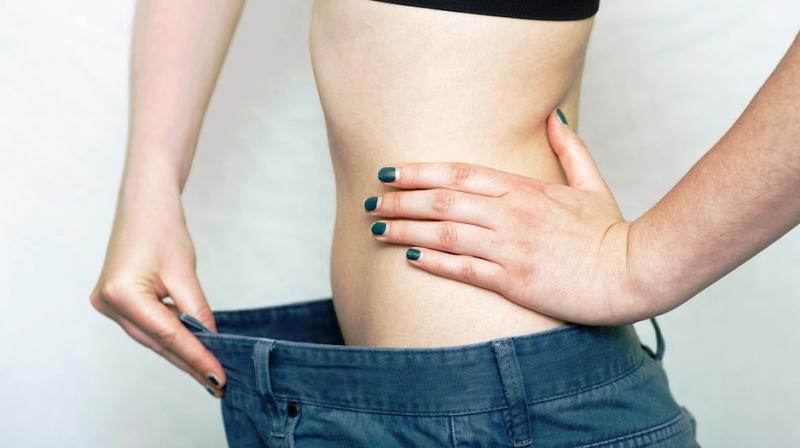Obesity differs in men and women
Body fat affects men and women differently.

Mumbai: Obesity is more common in women than in men, globally. Time has come when we would rename the word Obesity as ‘Obes-Sweety’.
Fatness is a more complex issue than just a matter of self control, the obese particularly women, adolescent girls, and the morbidly obese-continue to encounter discrimination in areas such as college placement, employment and social opportunities.
Victims typically are caught up in a vicious cycle of low self-esteem, depression, overeating for consolation, increased fatness, social rejection, and further self-defeating actions. In the process women face different kind’s health issues than men would face with similar fatness.
Most adults maintain a constant body weight, due to complex system of neutral, hormonal and chemical mechanisms that checks the balance between energy expenditure within fairly precise limits.
Abnormalities of these mechanisms, many of which are not completely understood, result in exaggerated weight fluctuations of these, the most common problem are overweight and obesity.
Body weight is the sum of bone, muscle, organs, body fluids and adipose tissue. There is no biologic reason to suggest that persons should increase their body weight as they age unless they want to increase they want to increase their muscle mass voluntarily.
Increase in the weight by increase in the fat during pregnancy and lactation is psychological and should bounce back in due course. Fat the primary energy reserve of the body is stores as triglyceride in depots made up of adipose tissue.
Appropriate body fatness for an adult woman ranges from 20% to 25% of body weight with about 12% as essential fat. In women, the essential fat includes an extra 5% to 9% sex- specific body fat in the breast, pelvic region and thighs.
This essential fat in both sexes include fat stored in bone marrow, heart, lung, liver, spleen , kidneys, intestine, muscles and lipid rich tissues in the nervous system and is necessary for normal physiologic functioning.
Storage fat is the fat that accumulates in the adipose tissue under the skin and around internal organs, to protect them from trauma.
Types of obesity:
Type 1 – excess body mass or fat percentage – overall predominance of body, no particular area.
Type 2 – Excess subcutaneous truncal (Andriod) – abdominal fat, excess subcutaneous fat on the trunk, particularly in the abdominal area also called as android fat deposition, or “apple shape,” this type of obesity is more common among men and is highly correlated with insulin resistance.
Type- 3 Central Adiposity / Excess abdominal visceral fat - excessive amount of fat in the abdominal visceral area (abdominal Cavity) and is strongly correlated with risk factors such as glucose intolerance, hyperlipidemia, and hypertension. Aging is also an important factor in visceral fat accumulation.
Type –4 Excess gluteofemoral fats (gynoid) - excess deposits of fat round the thighs and buttocks, also referred as “pear shape” obesity. Gynoid obesity is more common in women, and the fat deposits are energy reserves to support the demands of pregnancy and lactation.
Women with the gynoid type of obesity do not have health issues like metabolic syndrome or impairments of glucose metabolism seen in obese women of the same weight who carry their fat in the abdominal area – Central adiposity.
Postmenopausal women more closely follow the male pattern of abdominal fat stores. As a result, these women are at increased risk for blood glucose, lipid, and pressure abnormalities. Combinations of abdominal fat accumulation and gluteofemoral fat accumulation are also seen, particularly in women.
Regional fat distribution defines risk of hyper-lipidemia in obese adults. In both men and women who were obese during adolescence, rates of cardiovascular disease and diabetes are increased.
*Disclaimer: This article has been contributed by Dr. Kiran Rukadikar-Chairman, Liven Healthcare Pvt. Ltd., Bariatric Physician & Obesity Consultant. The opinions expressed within this article are the personal opinions of the author. The facts and opinions appearing in the article do not reflect the views of Deccan Chronicle, and Deccan Chronicle does not assume any responsibility or liability for the same.

